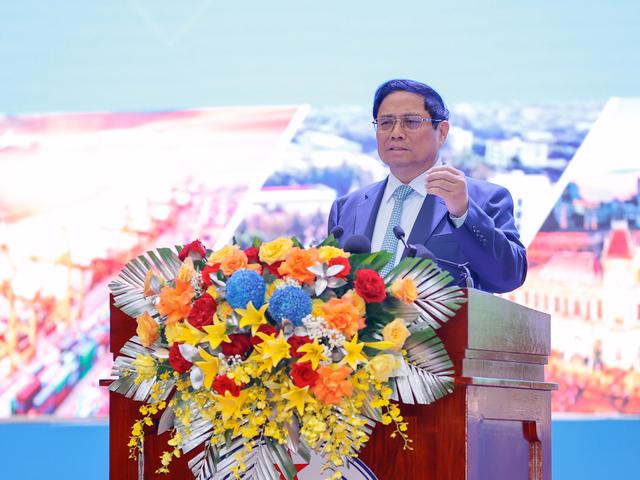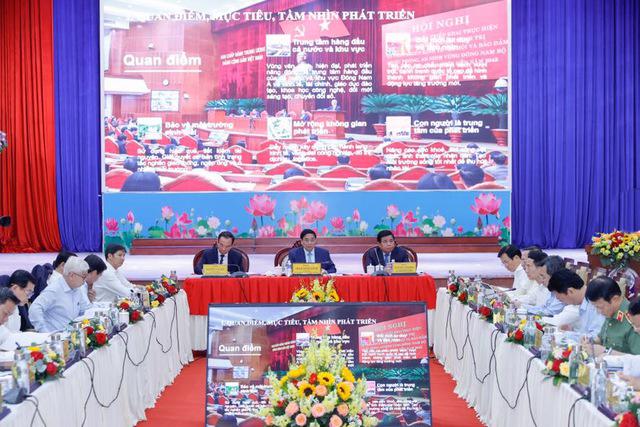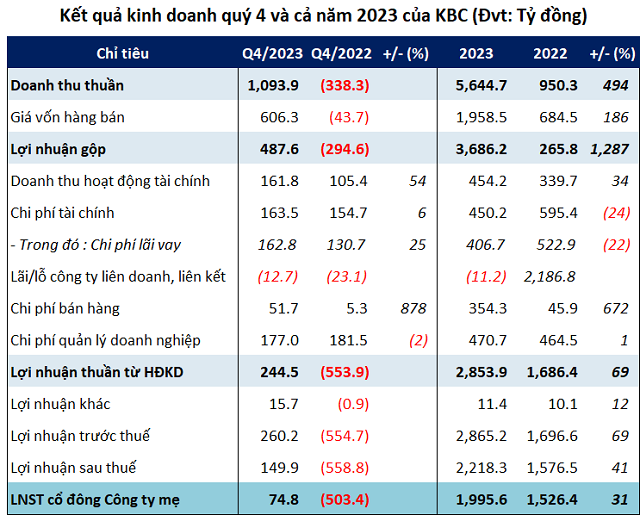Vietnam’s Southeast region is embarking on an ambitious journey to bolster its status as a leading economic engine for the nation. The region is characterized by its dynamic economic growth, robust export and foreign direct investment performances, and a highly skilled workforce.
At the heart of this development initiative lies a carefully orchestrated regional development plan, approved by Prime Minister Pham Minh Chinh, which capitalizes on the region’s unique potential and competitive advantages.
Unveiling the Region’s Economic Prowess
Despite its modest geographical footprint, the Southeast region accounts for an impressive 30.2% of Vietnam’s overall GDP, making it a critical economic fulcrum.
In 2023, the region’s Gross Regional Domestic Product (GRDP) growth rate of 5.06% surpassed the national average, indicating its resilience amid global headwinds.
The region’s economic preeminence is further underscored by its impressive per capita GRDP of VND 166 million (USD 6,561), a testament to its high living standards.
Its fiscal prowess is evident in its substantial state budget revenue of VND 689.7 trillion (USD 27.3 billion), accounting for a significant 36.2% of the national total, underlining its role in powering the country’s economic engine.
The region’s economic dynamism is fueled by its strong export performance and foreign direct investment (FDI) inflows.
In 2023, the Southeast region accounted for a commanding 31.4% of the country’s total exports, valued at a notable VND 112.7 trillion (USD 4.45 billion).
This export success is complemented by an equally impressive FDI attraction record, with the region securing USD 11.39 billion in foreign investment, representing 31.1% of the national total, highlighting its allure as an investment destination.

Catalyzing Seamless Connectivity through Infrastructure
A cornerstone of the region’s development blueprint is an unwavering commitment to infrastructure investments, which are seen as catalysts for enhancing regional accessibility and unlocking new economic frontiers.
Flagship projects, such as the Ring Road 3 in Ho Chi Minh City, the expansion of Tan Son Nhat International Airport, and the ambitious Long Thanh International Airport Phase 1, are progressing at a steady pace to help alleviate transportation bottlenecks.
The Ring Road 3 project, a vital artery encircling Ho Chi Minh City, is already under construction, with various sections progressing at varying rates.
The Long An province segment has achieved over 22% completion, while the Ho Chi Minh City portion stands at 12.5%.
The Binh Duong and Dong Nai province sections have attained 9% and 2% completion, respectively.
This strategic infrastructure endeavor aims to alleviate traffic congestion and facilitate the efficient movement of goods and people within the region.
Complementing the road network upgrades, the expansion of Tan Son Nhat International Airport is well underway, with the construction of the new Passenger Terminal T3 surpassing the 50% mark.
This multi-billion-dollar strategic investment is set to augment the airport’s capacity and elevate the travel experience for the region’s burgeoning passenger traffic.
The Ben Luc-Long Thanh expressway project, another critical transportation link, is also under active development, with the total volume of the bidding package currently reaching approximately 80.05%.
Upon completion, this expressway will provide a smooth connection between Long Thanh International Airport and the region’s urban hubs, further bolstering its accessibility and economic competitiveness.
Transcending conventional infrastructure, the plan envisions the establishment of a world-class International Financial Center in Ho Chi Minh City and a strategic Can Gio International Transshipment Port, aiming to position the region as a global nexus for finance and logistics.
The Can Gio project, in particular, has garnered significant attention, with the investor set to dispatch a delegation to finalize joint venture arrangements, signaling the project’s momentum.

Turbo-Charging Strategic Initiatives
Recognizing the need for expedited critical infrastructure initiatives, Prime Minister Pham Minh Chinh has issued directives to accelerate progress on key projects.
The Ho Chi Minh City-Moc Bai expressway, a vital artery connecting the region to neighboring Cambodia, is slated for the completion of its pre-feasibility study by May 15, paving the way for its implementation.
Similarly, the Gia Nghia (Dak Nong)-Chon Thanh (Binh Phuoc) expressway, a key inter-provincial corridor, has garnered the Prime Minister’s endorsement, with the pre-feasibility study report submitted to the National Assembly for consideration during its 7th session.
This strategic link is expected to foster greater economic integration and mobility within the region.
Beyond these major expressway initiatives, the Prime Minister has mandated the acceleration of several other projects, including the Ho Chi Minh City-Chon Thanh expressway, the Dau Giay-Lien Khuong expressway, and the Chon Thanh-Duc Hoa expressway.
Collectively, these infrastructure enhancements will form a robust transportation network, facilitating the seamless movement of goods and people across the region.
Furthermore, the Prime Minister has set ambitious targets for the completion of several flagship projects, including the Long Thanh International Airport, scheduled for substantial completion in 2025.
The inauguration of the Passenger Terminal T3 at Tan Son Nhat International Airport has also been scheduled for April 30, 2025, emphasizing the government’s commitment to improving the region’s air connectivity.
Embracing Economic Sector Reinvention
In parallel with infrastructure upgrades, the plan focuses on restructuring economic sectors to align with modern trends and leverage the region’s inherent strength.
The development of high-value service industries, such as e-commerce, regional logistics centers, and the burgeoning Ho Chi Minh City International Financial Center, occupies a strategic position.
The Ho Chi Minh City International Financial Center, in particular, has captured significant attention, with the government recognizing its potential to position the region as a global financial hub.
Deputy Prime Minister Le Minh Khai has been entrusted with overseeing this ambitious endeavor, ensuring that the necessary legal and regulatory frameworks are in place to facilitate its development.
The establishment of a robust financial center is expected to attract an influx of investment, foster innovation, and solidify the region’s status as a leading economic powerhouse.
Moreover, the plan aims to harness innovation and utilize scientific advancements to fuel the region’s industrial sectors.
By fostering entrepreneurship and embracing cutting-edge technologies, the region seeks to establish itself as a hub for knowledge-based industries and promote sustainable, long-term growth.
The Ministry of Science and Technology, led by Minister Huynh Thanh Dat, plays an active role in this endeavor, promoting increased investment in research and development and encouraging public-private partnerships to expedite the








































